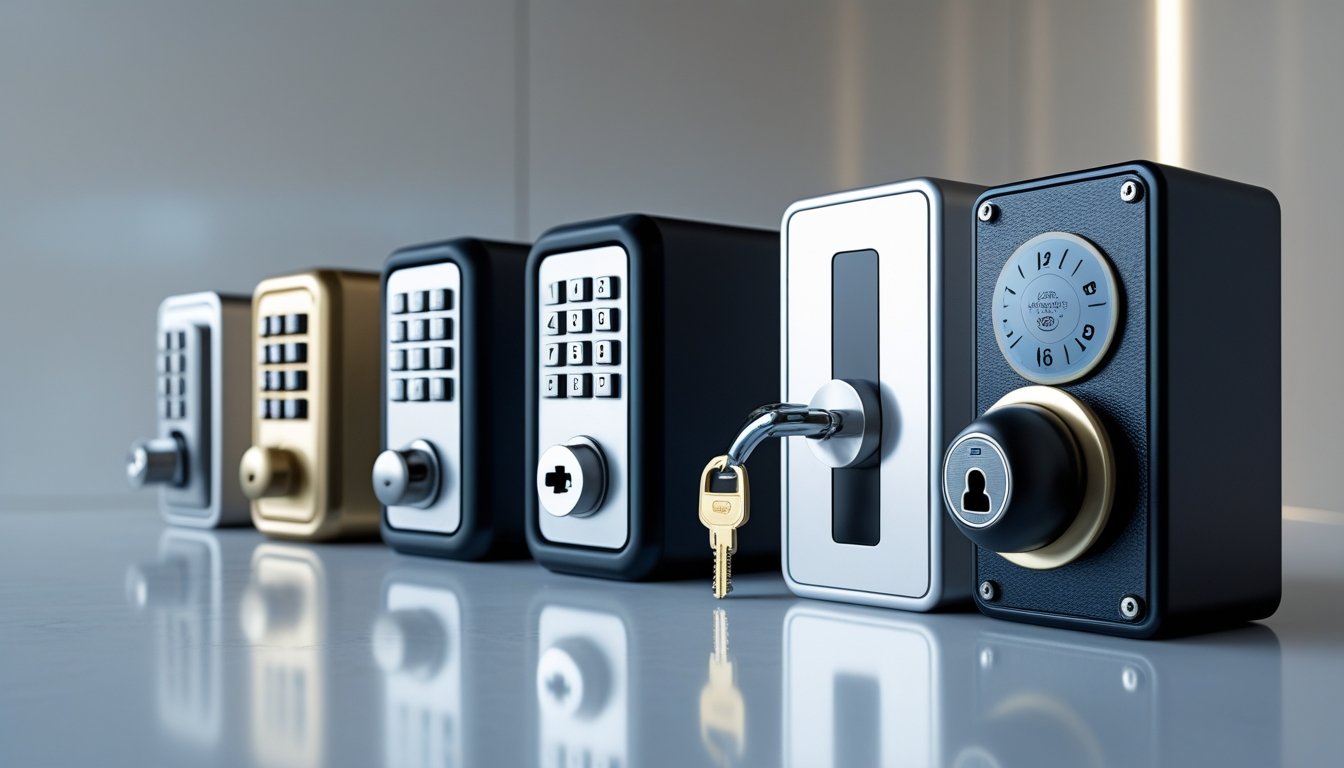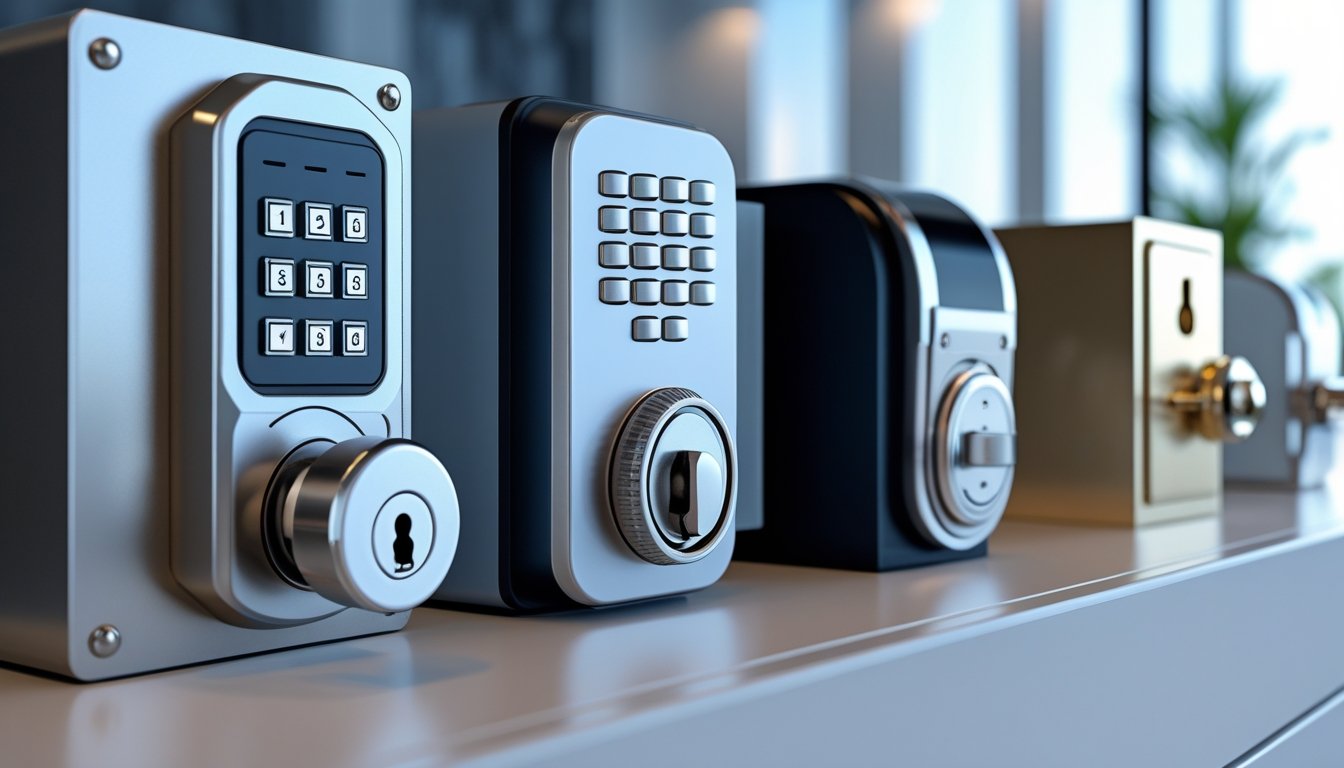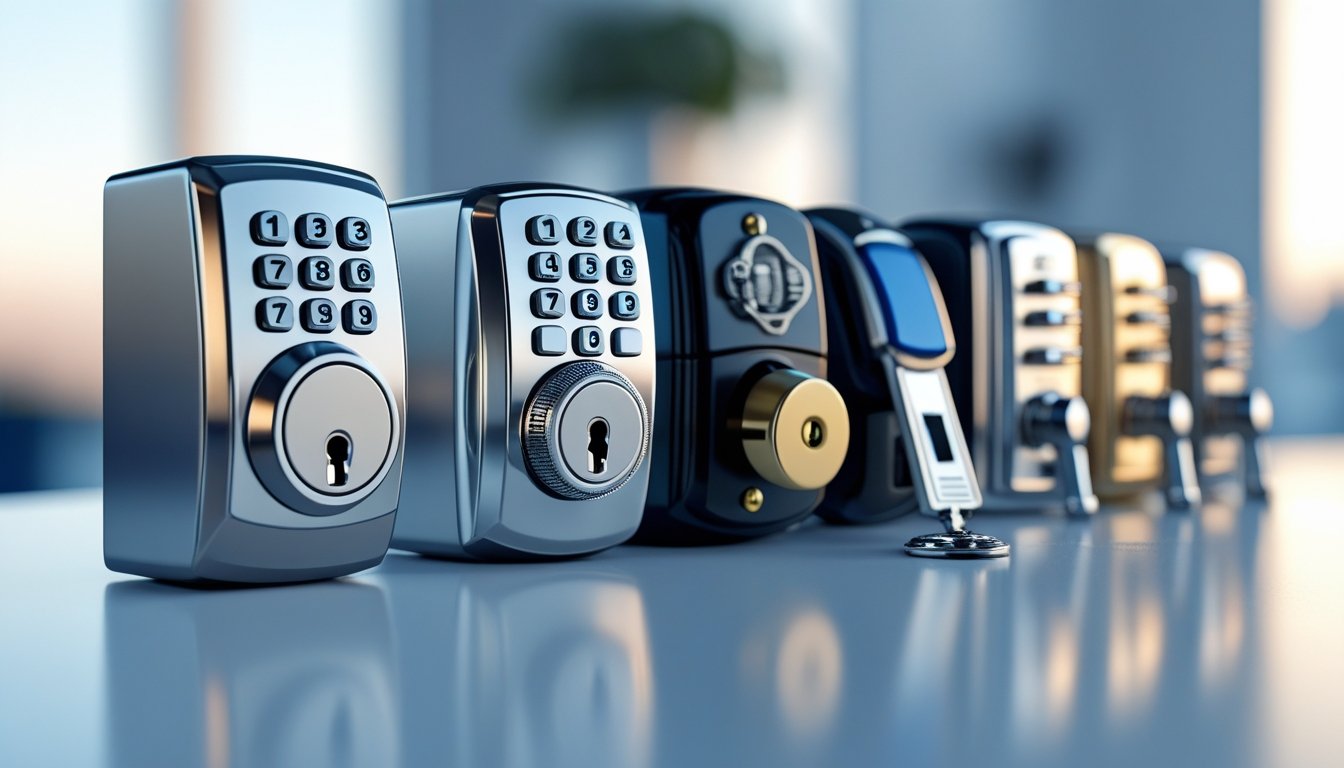Late updated: 07 Aug 2025 09:08
Written by: Elena Prescott
Understanding Different Types Of Safe Locks: A Comprehensive Guide
Unlocking the secrets of safe locks reveals a fascinating array of mechanisms each designed to keep our valuables secured against unauthorised access. From traditional mechanical combination locks to the sophisticated electronic and biometric systems of today, choosing the right safe lock can make all the difference in achieving peace of mind. Our exploration will shed light on these various types of locks, helping you make informed decisions based on your needs.

The simplest safe lock mechanisms often involve mechanical dials known for their reliability over decades. Electronic locks, on the other hand, provide the added convenience of keypads and personalised codes, streamlining access while ensuring security. For those desiring cutting-edge protection, biometric locks offer an advanced solution, leveraging unique physical traits like fingerprints for secure entry.
As we evaluate each locking mechanism, it’s essential to understand which type offers the most effective security for its intended use. Whether prioritising ease of use or focusing on maximum security features, our guide aims to assist in selecting the optimal safe lock that aligns with your specific requirements.
Key Takeaways
- Multiple safe lock types suit different needs.
- Advanced locks use biometric and electronic features.
- Choose security features based on use and convenience.
Key Types of Safe Lock Mechanisms
In this section, we explore the primary safe lock mechanisms that provide different security advantages for various needs. These systems include traditional key locks, combination locks, electronic keypad locks, and biometric lock systems.
Key Locks Explained
Key locks are one of the most traditional types of safe locks. They involve a physical key to open the safe. Their simplicity offers straightforward use and maintenance. Many people prefer key locks due to their reliability and ease of use.
One primary concern with key locks is the risk of losing the key, which could compromise the security of the safe. Proper key management becomes essential to avoid such issues. Additionally, if a key is stolen, the lock can often be replaced. Despite these potential drawbacks, key locks remain popular for their cost-effectiveness and durability.
Combination Locks Overview
Combination locks are another well-established safe lock mechanism. Users open the safe by turning a dial to align numbers in a specific sequence. The need for a physical key is eliminated, reducing the risk of key mismanagement.
Combination locks consist of robust mechanisms that offer enhanced durability and resistance to tampering. While these locks require memorisation of the combination, the option to reset the sequence provides added security flexibility. On the downside, forgetting the combination can be problematic, often necessitating professional assistance to regain access.
Electronic Keypad Locks
Electronic keypad locks provide a modern approach to security. Users enter a numeric code using a keypad to unlock the safe. These locks often come with features such as auto-locking and incorrect entry alerts, enhancing security.
A significant advantage is the ability for quick and convenient access without needing a key. The numeric code can often be easily changed, increasing security. Battery dependence is a consideration, as it requires regular checks and replacements. Despite this, electronic keypad locks offer user-friendly operation and flexibility, making them a popular choice.
Biometric Lock Systems
Biometric lock systems offer advanced security by utilising unique physical attributes, such as fingerprints or retina patterns, to unlock safes. This type of lock provides high security due to the uniqueness of the biometric data, ensuring that only authorised persons can gain access.
Biometrics eliminate concerns about lost keys or forgotten codes. However, it is key to ensure that the biometric scanner remains clean and functional, as dirt or damage may affect performance. Though generally more expensive, biometric systems are ideal for those prioritising convenience and security.
Advanced and Hybrid Safe Lock Systems

Advanced and hybrid safe lock systems combine multiple security features to enhance protection and convenience. These systems include various configurations, such as dual lock systems, that offer added security layers, making them an excellent choice for protecting valuable assets.
Dual Lock System Functionality
Dual lock systems integrate two separate lock mechanisms, requiring both to be unlocked for access. This may involve a combination of keypad locks and mechanical locks, ensuring that if one method is compromised, the other remains secure.
One common setup includes an electronic keypad paired with a traditional key lock. This configuration provides flexibility and extra security, as both locks must be operated to open the safe. It's particularly useful in shared environments, such as offices where multiple persons need access.
These systems often feature an override capability, allowing a secure yet efficient way to manage emergencies. Utilising dual lock systems can significantly reduce the risk of unauthorised access, increasing protection for sensitive and valuable items.
Selecting the Right Lock System
Choosing the right lock system depends on various factors, such as the level of security required, ease of use, and environmental conditions where the safe will be used. It's important to assess our specific needs, including the number of users and frequency of access.
We should consider systems that offer reliability and durability, especially when dealing with valuable assets. For instance, in high-security settings, dual lock systems incorporating both biometric and electronic keypad mechanisms might be appropriate.
Another key consideration is the availability of emergency override options, which ensure access isn't completely restricted in unforeseen situations. Evaluating these elements will help us select a lock system that provides the desired security and convenience levels.
Frequently Asked Questions

In choosing a safe lock, we need to consider reliability, ease of operation, and specific use cases such as for firearms. Each type of lock offers unique features that cater to different needs, and it's vital to ensure functionality and security.
What are the most reliable locking mechanisms for safes?
Reliable locking mechanisms combine robust construction with advanced security features. Mechanical combination locks and high-quality electronic locks are commonly regarded as trustworthy, offering durability and security. Key locks can also be reliable, though they involve risks related to lost keys.
How does a dial combination safe lock operate?
A dial combination lock operates by rotating a numbered dial to align internal tumblers with a pre-set code. This precise alignment allows the lock to open. It is a time-tested mechanism known for its dependability and does not require electricity.
Which lock type is preferable for gun safes?
When it comes to gun safes, electronic locks are often preferred for quick access and user convenience. Nonetheless, some users favour mechanical locks for their reliability, especially if electronic failure is a concern. The choice depends on how quickly you need to access the contents and personal preferences regarding maintenance.
Can you explain the difference between mechanical and electronic safe locks?
Mechanical locks rely on physical movement and do not require power, making them dependable over time. Electronic locks use digital interfaces, providing ease of access and often additional security features. They can be more user-friendly but depend on battery or electrical power.
What features should be considered when selecting a safe lock for a door?
For door safes, we should look at ease of use, security rating, and lock compatibility with the door. Built-in alarms or anti-tamper mechanisms can enhance security. Ensuring the lock fits well with the door's structure maintains integrity.
How can one ensure their safe is properly locked and secure?
To ensure a safe is secure, we must regularly check the locking mechanism for wear and test the lock frequently. Always change codes periodically if using combination or electronic locks. Ensuring there are no obstructions when closing the door prevents malfunctions.
